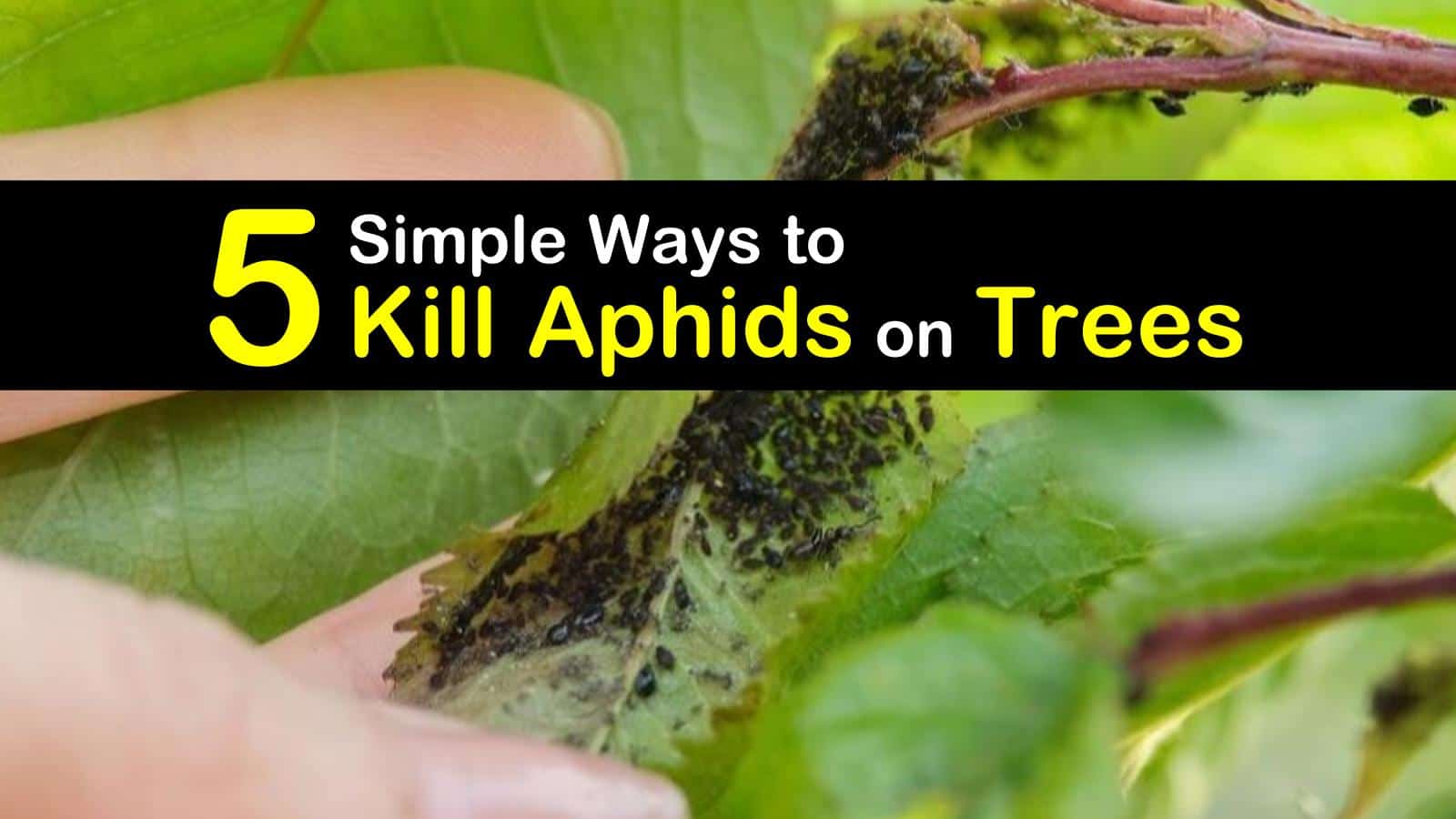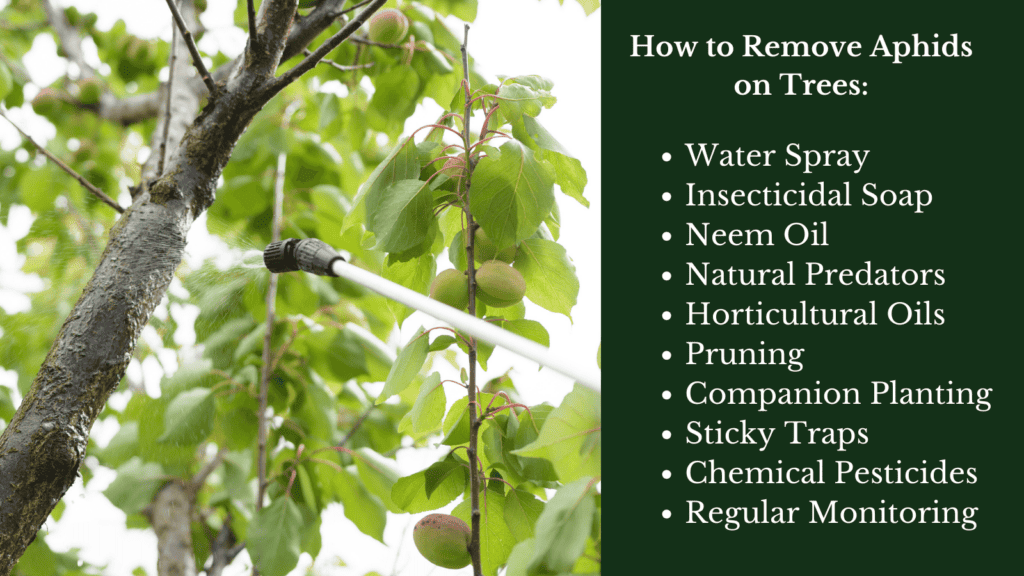Settings with vibrant landscapes, rich in diverse flora, offer a splendid showcase of nature’s beauty. Yet, with such lushness comes the inevitable presence of garden pests, among which aphids are particularly notorious. These small but harmful insects can be a significant problem for trees, impacting their health and vigor.
Understanding the plants aphids are attracted to, recognizing their presence, and knowing how to effectively combat them are crucial steps in maintaining the health and beauty of your trees and garden. Identifying and eradicating aphids will ensure your green spaces remain thriving and resilient.
Aphids, belonging to the Hemiptera order, are small insects that feed on plant sap. Their colors can differ based on diet and species. Aphids are small in size but reproduce at a rapid rate, inflict considerable damage to plants and trees if not controlled.
Aphids are a common pest that can infest many plants, including bald cypress trees. These small, sap-sucking insects can weaken and stress trees by feeding on plant fluids. A heavy aphid infestation can cause bald cypress trees to become covered in sticky honeydew and black sooty mold. Getting rid of aphids on bald cypress trees takes diligence, but is possible with the right techniques.
Identifying Aphids on Bald Cypress Trees
The first step in controlling aphids is learning to identify them. Aphids are tiny, soft-bodied insects that come in a variety of colors like green, yellow, brown or black. They tend to feed in clusters on the undersides of leaves, along branches, and even on roots. Aphids secrete a sticky waste called honeydew. A black fungus called sooty mold may grow on the honeydew. Look for these signs to determine if your bald cypress tree is infested with aphids.
Non-Chemical Ways to Get Rid of Aphids
For mild aphid infestations, non-chemical controls may be effective for bald cypress trees. Try these methods first before moving on to insecticidal soaps or horticultural oils:
-
Blast them off with water Use a strong stream of water from your garden hose to physically remove aphids from branches and leaves Focus on the undersides of leaves. Repeat regularly to control their numbers
-
Encourage natural predators Ladybugs lacewings parasitic wasps, and birds feed on aphids. Avoid pesticides that would harm them. Plant flowers near your cypress tree to attract more of these natural enemies.
-
Use reflective mulch: Aluminum foil, mylar, or other reflective mulches around the base of the tree can help deter aphids from feeding on roots and lower trunk areas.
-
Apply kaolin clay: This white mineral powder coats leaves with a fine film that can deter pests. It washes off over time and may need reapplication.
-
Prune infested branches: Heavily infested branches can be pruned off and destroyed to quickly lower aphid numbers.
Insecticidal Controls for Aphids
If non-chemical methods are not keeping the bald cypress aphid population under control, insecticidal soaps or horticultural oils can be used:
-
Insecticidal soaps: Potassium salts of fatty acids kill aphids on contact by disrupting cell membranes. Look for targeted products suitable for trees, and apply according to label directions.
-
Horticultural oils: These oils smother insects and disrupt feeding. Use a dormant season application to kill overwintering aphid eggs. A lighter application during summer can control hatching nymphs. Thorough coverage is key.
-
Systemic insecticides: These are taken up by the roots and make the plant’s tissues and fluids toxic to feeding insects. Options include imidacloprid and dinotefuran applied as soil drenches. They provide longer control than contact insecticides.
When using any chemical control, carefully follow label directions for the product and Bald Cypress species. Monitor effectiveness and repeat applications as needed per label instructions.
Preventing Aphids on Bald Cypress Trees
Stopping aphids before they become a major infestation is ideal. Here are some bald cypress tree care tips to avoid future aphid problems:
-
Water appropriately. Drought-stressed trees are more susceptible to pests.
-
Prune for good airflow and light penetration to reduce habitat favored by aphids.
-
Fertilize lightly in spring. Excess nitrogen favors aphid reproduction.
-
Monitor weekly for early detection of pests before they multiply.
-
Remove weeds, grasses, and debris around the tree’s base to eliminate alternative hosts.
-
Use reflective mulches early in the season to prevent root colonization.
Dealing with Root Aphids on Bald Cypress Trees
Aphids sometimes infest and feed on bald cypress roots, covered by the soil. Root aphids weaken the roots and stunt the tree’s growth. They produce the same honeydew and sooty mold issues. Root aphids are hard to fully eradicate but here are some treatment options:
-
Submerge the root ball in water to drown some aphids. Remove from water quickly to avoid harming the roots.
-
Consider systemic insecticides applied as soil drenches to reach root aphids.
-
Solarize the root zone under clear plastic in summer to overheat aphids.
-
Replace the soil and wash all roots thoroughly before repotting container-grown cypress trees.
-
Bare root field-grown bald cypresses during transplanting to fully expose roots for treatment.
Aphids can be challenging to control but taking an integrated approach with regular monitoring, good cultural practices, and properly-timed treatments can keep them in check. Protect your beautiful bald cypress trees from unsightly honeydew drippings and damage from these tiny pests. Stay vigilant against aphids and enlist natural predators like lady beetles as your allies in this effort. With persistence, you can enjoy a flourishing aphid-free bald cypress tree.

How to Prevent Aphids from Attacking Trees?
To prevent aphids from attacking trees, it’s essential to adopt a proactive approach in garden maintenance. Regularly inspecting trees for early signs of aphids will lead to prompt intervention. Encouraging a healthy ecosystem by attracting beneficial insects naturally keeps aphid populations in check. Keeping the trees well-watered and nourished ensures they are less vulnerable to infestations.
What are Signs of Aphids on Trees?
Identifying aphids early on is key to effective control. Be on the lookout for these indicators:
- Clusters of Small Insects: Aphids typically congregate in dense groups, often found on the undersides of leaves or around areas of new growth on the tree.
- Leaf Changes: Trees infested with aphids show signs of leaf distortion, such as curling or yellowing, and the overall growth of the plant may appear stunted.
- Honeydew Secretion: A noticeable sign of aphid activity is the presence of honeydew. This sticky, sugary substance is excreted by aphids and attracts ants. Additionally, it leads to the development of sooty mold on the leaves and branches of the tree.
Aphids are primarily attracted to plants by a few key factors. They have a strong preference for the tender, new growth of plants, as these young leaves and stems are softer and easier for them to penetrate and feed on. Additionally, plants that contain nutrient-rich sap are particularly appealing to aphids. This sap provides the essential nutrients that aphids need to survive and reproduce. Moreover, aphids favor warm and sheltered environments. They often gravitate towards areas of a plant that offer protection and a favorable microclimate, which aids in their feeding and breeding activities. These factors combined make certain plants especially susceptible to aphid infestations.

Bald Cypress Bonsai – Root Aphids
FAQ
How to get rid of cypress aphids?
Can a tree recover from aphids?
How to get rid of aphids on tall trees?
How do I get rid of green aphids on my tree?
Do beech blight aphids eat bald cypress?
During the summer and fall, beech blight aphids fly to infest the roots of bald cypress. The beech blight aphid cycles from bald cypress (and perhaps Cryptomeria) to American beech. Pyrethroid insecticides, horticultural oil sprays (weather permitting), and insecticidal soaps should provide adequate suppression.
How do you get rid of tree aphids?
Saturate the tree’s foliage thoroughly, and rinse with water from the hose to kill root aphids and other species. Only apply insecticidal soap when temperatures remain between 30 and 90°F. Wear protective gloves and long sleeves for safety as well.
Can a cypress aphid kill a conifer hedge?
The damage inflicted on conifer hedges by the cypress aphid ( Cinara Cupressi) is profound and can result in large brown patches on the hedge. Infestation reduces the aesthetic look of the hedge and can lead to localised death.
How do you get rid of aphids on hibiscus trees?
If you see aphids on your trees, hose them down immediately. A stream of water is usually all it takes to banish a minor infestation, whether in a tree or for eliminating aphids on hibiscus plants. Use running water from a garden hose or a sprayer to rinse off the plants, including the undersides of every leaf.
